OCZ Vertex 4 Indilinx 256GB & 512GB SSD Reviews
ATTO & AS-SSD Benchmarks
ATTO v2.41
ATTO is one of the oldest drive benchmarks still being used today and is still very relevant in the SSD world. ATTO measures transfers across a specific volume length. It measures raw transfer rates for both reads and writes and places the data into graphs that can be very easily interpreted. The test was run with the default runs of 0.5kb through 8192kb transfer sizes with the total length being 256mb.
ATTO – Intel P67 Platform
OCZ Vertex 4 256GB:
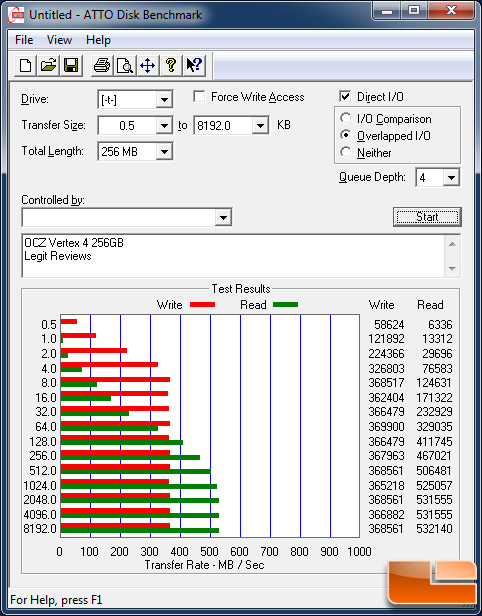
OCZ Vertex 4 512GB:
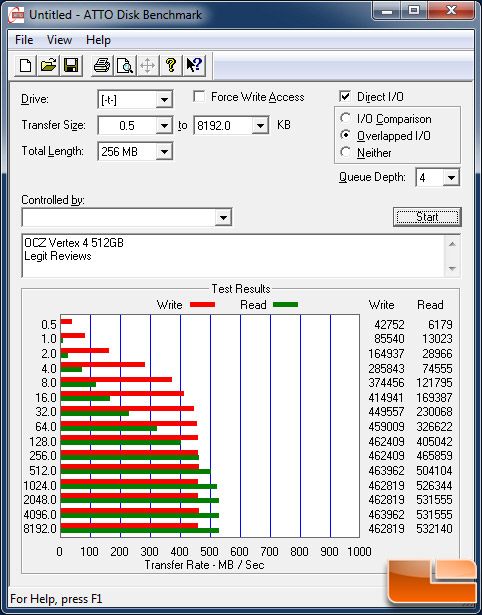
Benchmark Results: The smaller 256GB OCZ Vertex 4 comes up a bit slower than that of the 512GB in the writes but reads are pretty close. Each trail the SandForce based Intel 520 drive but then again, the SandForce drives have an advantage as they use compression to hasten the writes.
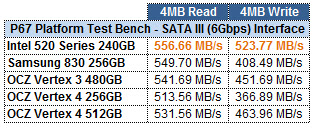
AS-SSD (1.6.4237.30508) Benchmark – Intel P67 Platform
We have been running the AS-SSD Benchmark app for over some time now and found that it gives a broad result set. The programmer has worked very hard on this software and continues to make updates often so if you use it, show him some love and send him a donation. There are now three tests that are found within the tool and we’ll show the results from all of them.
OCZ Vertex 4 256GB:
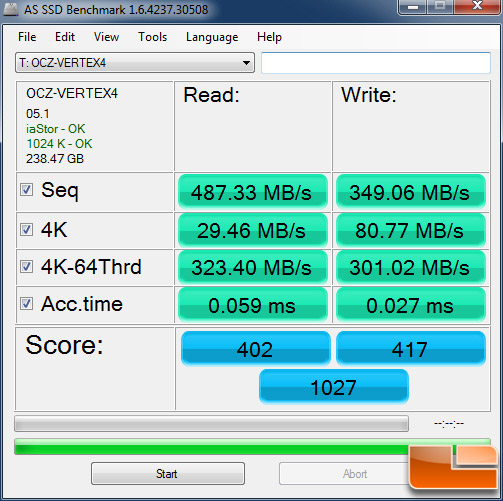
OCZ Vertex 4 512GB:
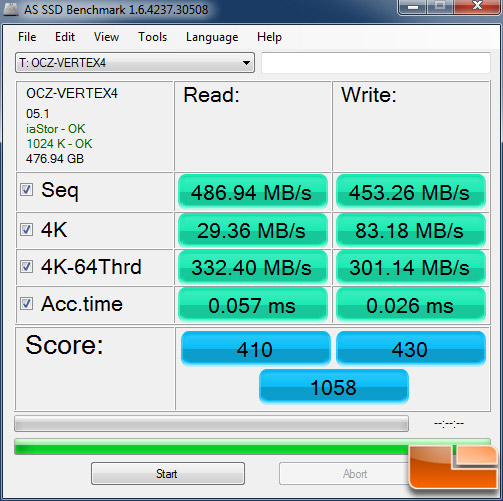
Benchmark Results: It’s evident that the 4k writes have been vastly improved over the Vertex 3 drives as the scores show a large variance in performance between the third and fourth generation Vertex drives. In fact, they darn near ran away with all the best scores and posted an overall score way above any of the other drives in the comparison.

OCZ Vertex 4 256GB:
OCZ Vertex 4 512GB:
Benchmark Results: Unlike the SandForce drives, the level of data compression plays no part in performance and therefore you get nice level lines on the graphs. If looking at the Vertex 3 graph, you’d see the red line start about halfway down the chart and work its way higher as it moved to the right.

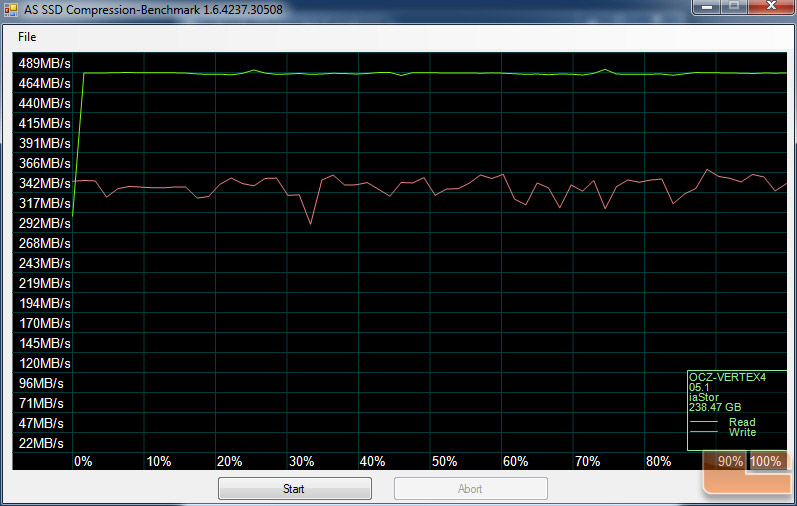
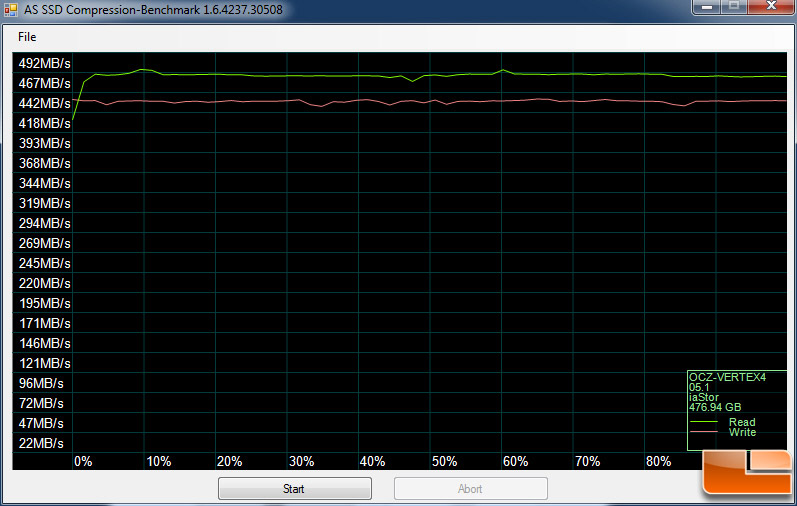
Comments are closed.